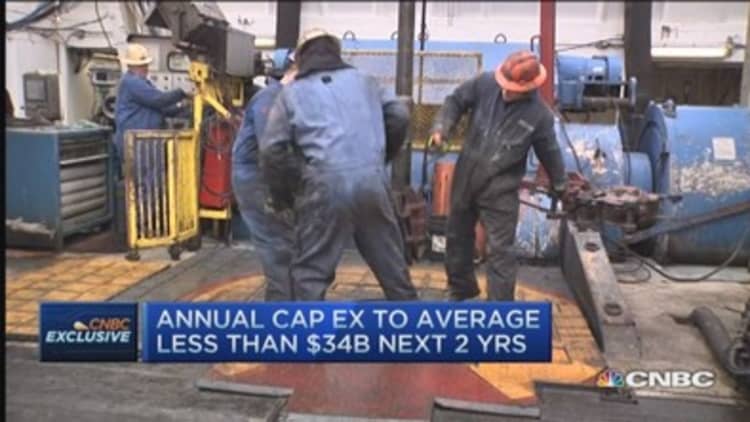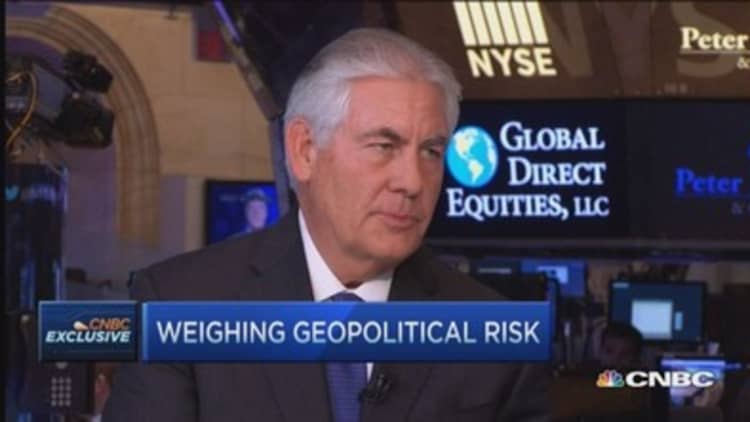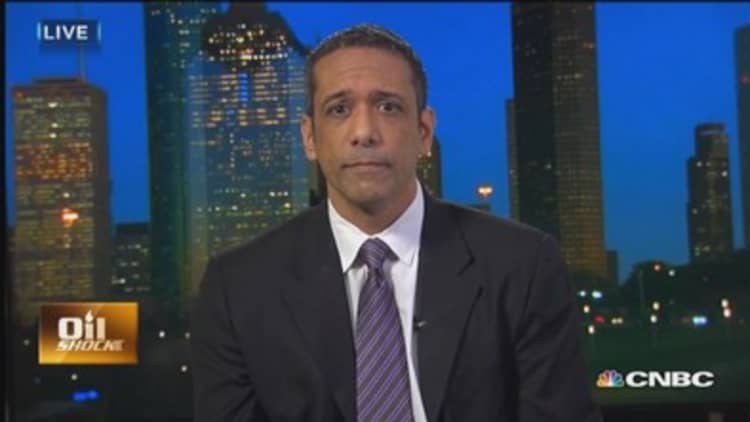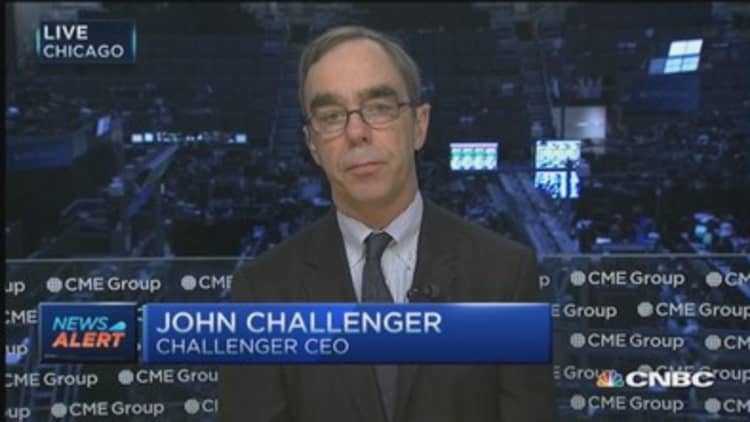
This is a breaking news story. Please check back.
U.S. crude futures ended lower on Thursday after a volatile trading session in the face of a strong dollar and the U.S. commitment to forge a nuclear deal with Iran.
Concerns about deteriorating oil supplies from Libya and Iraq boosted crude prices even before the New York session.
Without new bullish factors apparent in U.S. trading hours, the market stayed afloat on buying from those convinced it had hit bottom since the June-January selloff that had knocked 60 percent off crude prices, analysts said.
Read MoreExpect low prices, more volatility in oil: Exxon CEO
U.S. crude for April delivery closed 77 cents, or 1.5 percent, at $50.76 a barrel after hitting a session peak of $52.40.
The front-month contract in was flat at $60.60 a barrel, after rallying more than $1 earlier.



"The fundamentals dictate that prices should be lower, but market bulls and bottom pickers continue to discount bearish news and embrace anything that's even remotely bullish," said Dominick Chirichella, senior partner at the Energy Management Institute in New York.
A deteriorating security situation led Libya's state oil company to declare force majeure on 11 of its oilfields on Wednesday. Output from Libya is at about a quarter of highs seen before the country's 2011 civil war.
Read More Iraq, Iran and Libya are wildcards for oil: Expert
In Iraq, Islamic State militants set fire to oil wells in the Ajil field east of Tikrit to try to hinder aerial attacks aimed at driving them from the oilfield.
Those bullish factors ran contrary to the spike in the dollar and the U.S. decision to press ahead with its nuclear negotiations with Tehran.
The dollar jumped to 11½ year lows against the euro after European Central Bank chief Mario Draghi left the door open for asset purchases beyond September 2016. A stronger dollar is regarded a negative for oil as it weakens demand for crude from buyers holding other currencies.
U.S. Secretary of State John Kerry said a nuclear deal with Tehran would address security concerns of Gulf Arab countries, although Washington was not seeking a "grand bargain" with Iran, a reference to wider political and security cooperation.
Read MoreOil firms are swimming in data they don't use
On Monday, oil tumbled, with Brent falling 5 percent, on fear that a quick nuclear deal for Tehran could lift U.S. and other Western government sanctions against the OPEC nation and flood the market with new oil exports.
Weaker-than-expected U.S. jobless claims and factory orders and a drop in nonfarm productivity were other negatives for oil.

